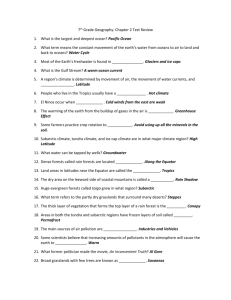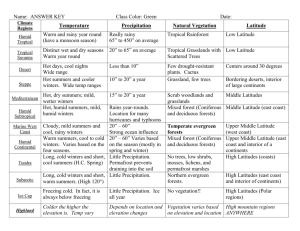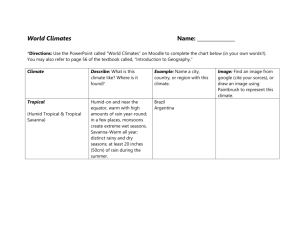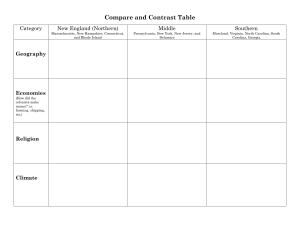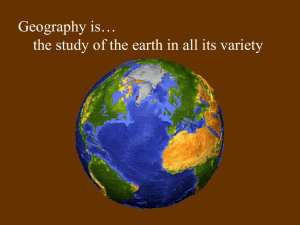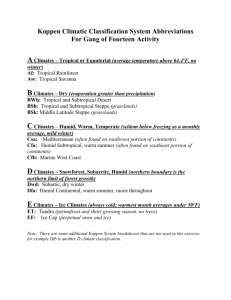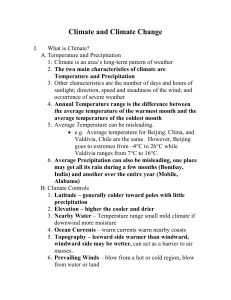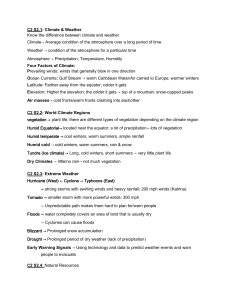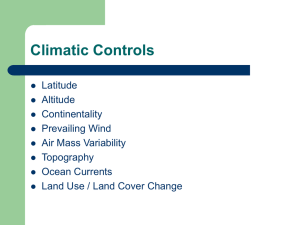Chapter 20 Vocabulary List
advertisement
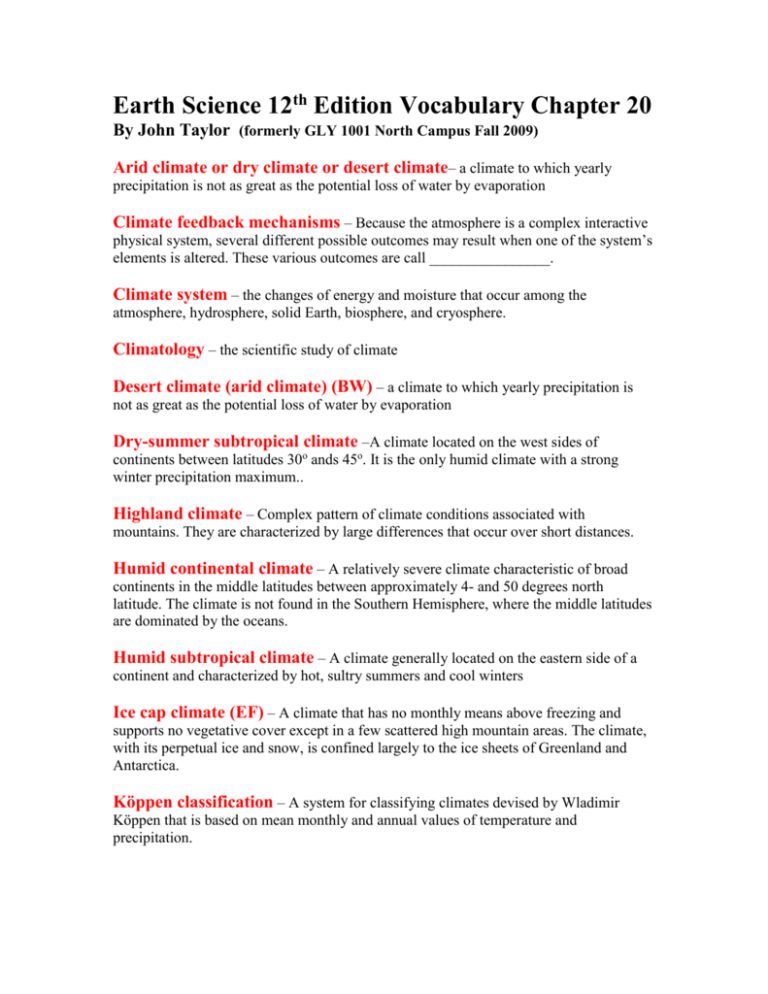
Earth Science 12th Edition Vocabulary Chapter 20 By John Taylor (formerly GLY 1001 North Campus Fall 2009) Arid climate or dry climate or desert climate– a climate to which yearly precipitation is not as great as the potential loss of water by evaporation Climate feedback mechanisms – Because the atmosphere is a complex interactive physical system, several different possible outcomes may result when one of the system’s elements is altered. These various outcomes are call ________________. Climate system – the changes of energy and moisture that occur among the atmosphere, hydrosphere, solid Earth, biosphere, and cryosphere. Climatology – the scientific study of climate Desert climate (arid climate) (BW) – a climate to which yearly precipitation is not as great as the potential loss of water by evaporation Dry-summer subtropical climate –A climate located on the west sides of continents between latitudes 30o ands 45o. It is the only humid climate with a strong winter precipitation maximum.. Highland climate – Complex pattern of climate conditions associated with mountains. They are characterized by large differences that occur over short distances. Humid continental climate – A relatively severe climate characteristic of broad continents in the middle latitudes between approximately 4- and 50 degrees north latitude. The climate is not found in the Southern Hemisphere, where the middle latitudes are dominated by the oceans. Humid subtropical climate – A climate generally located on the eastern side of a continent and characterized by hot, sultry summers and cool winters Ice cap climate (EF) – A climate that has no monthly means above freezing and supports no vegetative cover except in a few scattered high mountain areas. The climate, with its perpetual ice and snow, is confined largely to the ice sheets of Greenland and Antarctica. Köppen classification – A system for classifying climates devised by Wladimir Köppen that is based on mean monthly and annual values of temperature and precipitation. Marine west coast climate - Climate found on the westward coasts from latitudes 40-65 degrees and dominated by maritime air masses. Winters are mild and summers are cool Polar climate – Climates in which the mean temperature of the warmest month is below 10oC (50oF). They are known for their enduring cold. Rain shadow desert – A dry area on the lee side of a mountain range. There are many of them in the middle-latitudes. Semiarid climate – see steppe Steppe climate (BS) – One of the two types of dry climates. A marginal and more humid variant of the desert that separates it from bordering humid climates.. Subartic climate – A climate found north of humid continental climate and south of the polar climate and characterized by bitter cold winters and short, cool summers. Places within this climate realm experience the highest annual temperature ranges on Earth. Tropical rain forest – A luxuriant broadleaf evergreen forest; also, the name given the climate associated with this vegetation. Tropical wet and dry climate – A climate that is traditional between the wet tropics and the subtropical steppes Tundra climate (ET) – a type of polar climate which is treeless and found exclusively in the Northern Hemisphere. The winters are severe, the summers cool, and annual temperature ranges are high.

